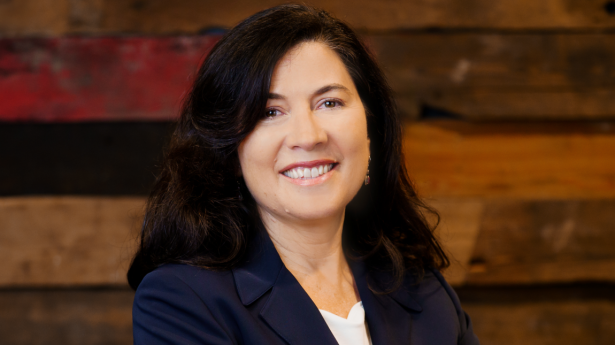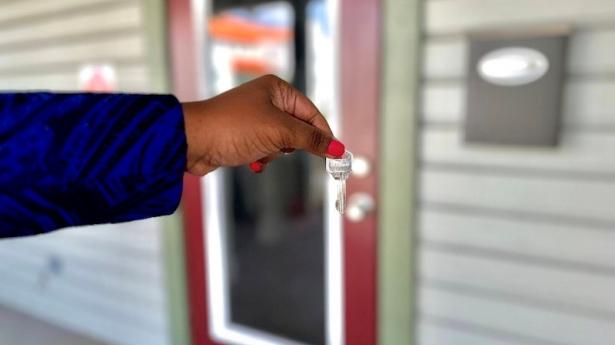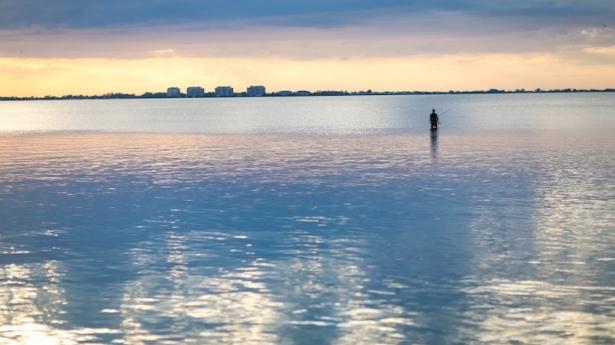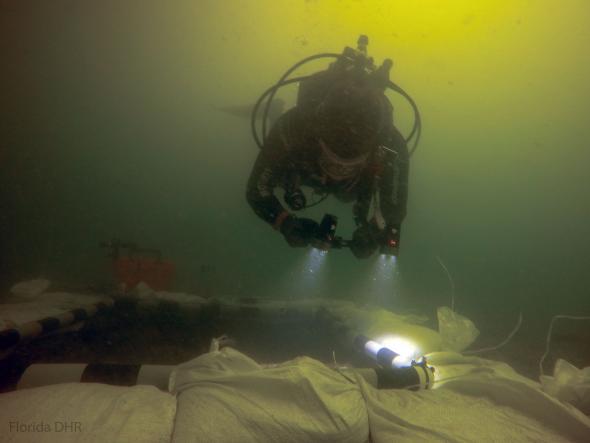
Protections Enhanced at Fragile Offshore Archaeological Site
Imagine it was your family.
That’s how Ryan Duggins, the State of Florida’s Underwater Archaeology Supervisor, encourages people to think of the Manasota Key Offshore (MKO) site—the prehistoric underwater discovery that took the world by storm in early 2018. Hiding under the turquoise surface of the Gulf of Mexico just yards from a Sarasota County beach rests a Native American burial ground dating back to the Archaic Period upwards of 8,000 years ago.
“I like to bring it closer to home,” says Duggins. “What if it was your family, what if it was your grandparents, how would you want it to be treated? This is the final resting place for a yet unknown number of Florida’s indigenous peoples, and that’s significant in and of itself.”
Florida’s Department of State announced the MKO site to global interest a little over a year ago. Called “unprecedented” by the likes of National Geographic and “ground-breaking” by Smithsonian.com, Manasota Key Offshore is the only known site of its kind in North or South America. A one-time inland freshwater pond where Native Americans interred their deceased back when the Florida peninsula was many miles wider, the site was long since submerged in the Gulf of Mexico by rising sea levels.

Peat at the bottom of the shallow pond in which those loved ones were buried served to incredibly preserve organic and cultural materials under the Gulf’s salt water all these years. But the site’s location several fathoms deep and about a quarter-mile offshore puts it at constant risk from natural occurrences like erosion, tides, and storms, as well as intentional or unintentional disturbance by divers.
Dive Buddies
Foremost in plans to manage the delicate site—which is the responsibility of the State under Florida law—is to protect it to the extent possible while ensuring it is treated in a respectful manner. To that end, the Florida Department of State invited Gulf Coast Community Foundation early on to convene and coordinate local research, law enforcement, and citizen resources that could bolster protective measures and help educate the public about the site’s unique cultural and historical value.
In 2018, Gulf Coast provided funding to install buoys around the perimeter of the site in order to mark and help protect it from boaters and divers—the first regulatory buoys of their kind protecting an underwater site of this nature. That was a big “win” for the researchers in notifying residents and visitors that this is a site worth protecting, according to Duggins. Unfortunately, those buoys were actually too buoyant, and after a couple of storms they were ripped up and washed ashore.
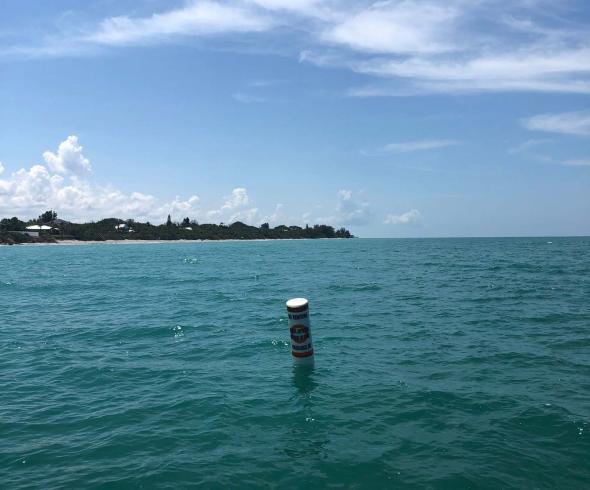
Earlier this month, a team consisting of state and county scientists, regional law enforcement, and local industry worked together to install four new buoys with smaller profiles and less upward buoyant force, as well as new information for curious mariners. The improved buoys also were funded by Gulf Coast.
“They look like the swim buoys you’ve probably seen marking the swim zones at public beaches, and we’re hopeful that they’ll stay put,” says Duggins. No better test than the start of hurricane season.
Perhaps the bigger threat to the delicate site, however, is boaters and divers. “We just want to make sure that no one accidentally disturbs the site or knowingly disturbs the site, so this is a good visual marker for that,” says Duggins.
Protect and Learn
While some contend that buoys could draw extra attention and curiosity to the site, Duggins and his team have been committed to informing and engaging the local community, particularly the dive community. The hope is that more understanding and appreciation leads to more respect and, ultimately, protection. Because MKO is an archaeological site, on state land, with unmarked human remains, it is illegal to disturb the site and doing so could result in a misdemeanor or felony.
Duggins and his team are working to further safeguard the site with hi-resolution imagery recording the exact buoy locations for a series of maps that will be made for distribution. They’ll also post notices for locals and mariners with the location of each buoy, which will ultimately end up on the National Oceanic and Atmospheric Administration’s charts.
Manasota Key Offshore continues to exist because a unique set of environmental factors allowed it to be preserved for as long as it has been. But Duggins knows it won’t be around forever. The site is rapidly eroding. Duggins and his team have recorded substantial loss in the past year alone. He detailed those changes at a May talk in Sarasota—where he also shared that the site is another 1,000 years older than initially estimated!
“It’s key that we do what we can to protect it while we have it,” he says, “and it’s also key that we do what we can to document it before it’s gone.”

